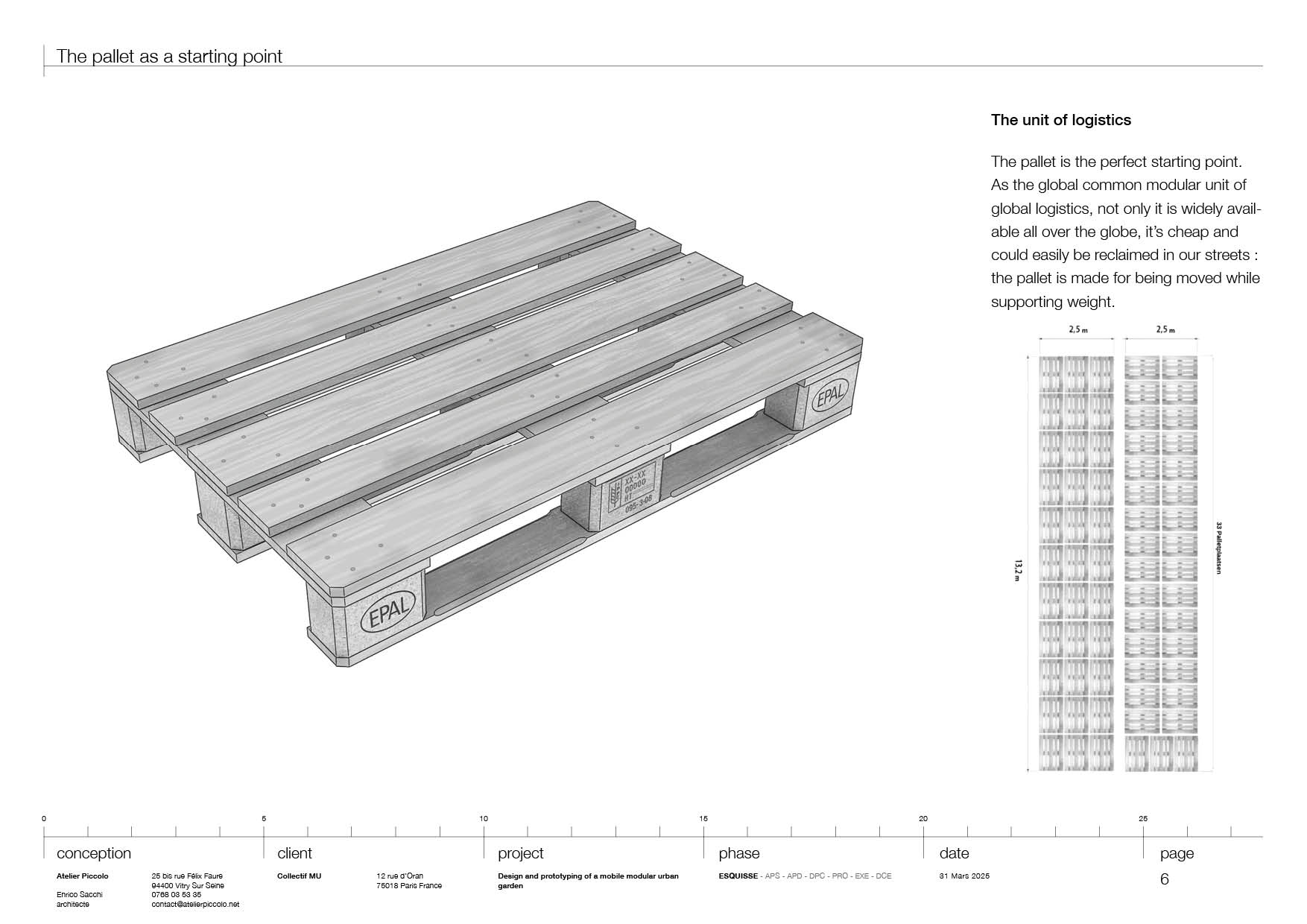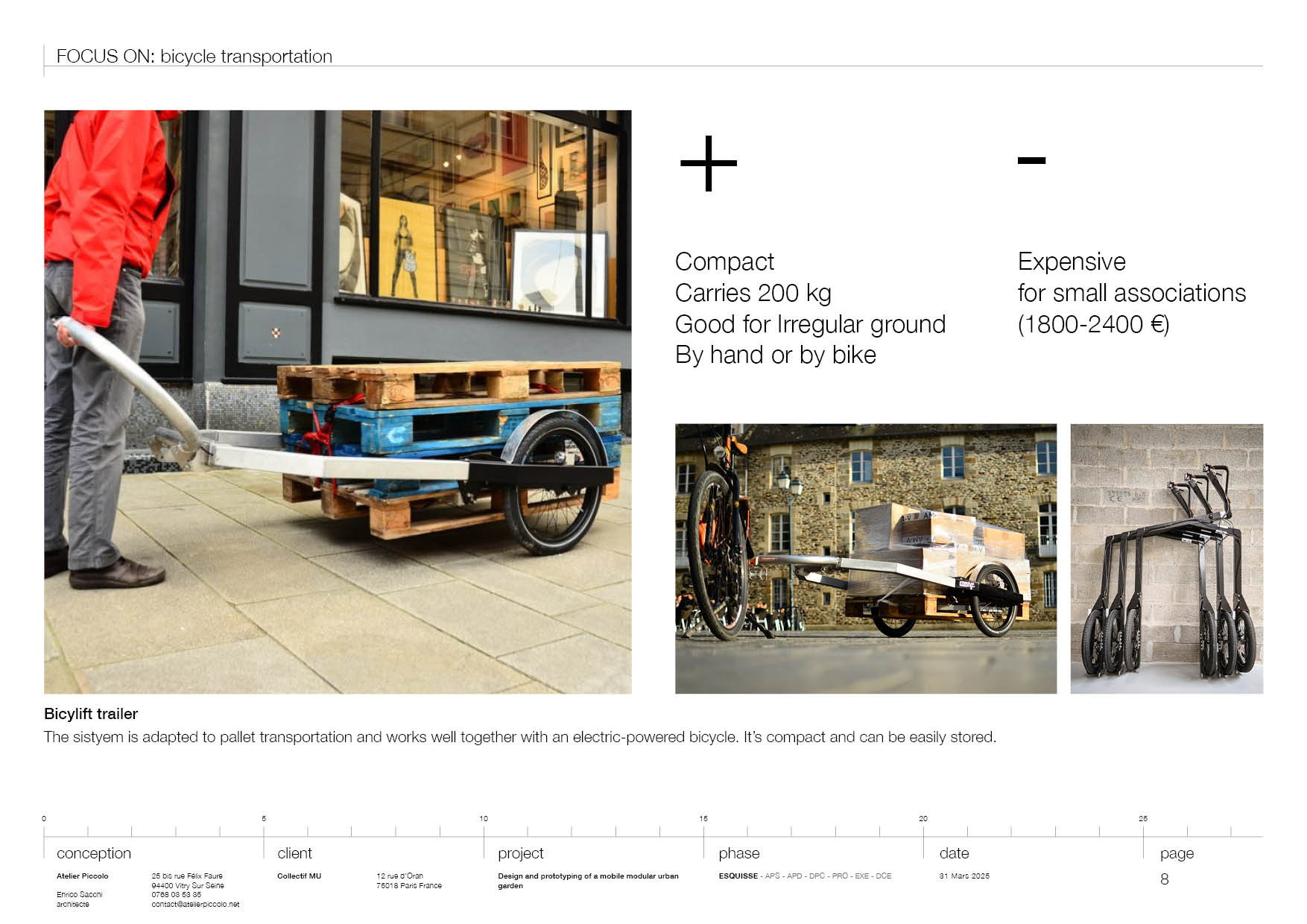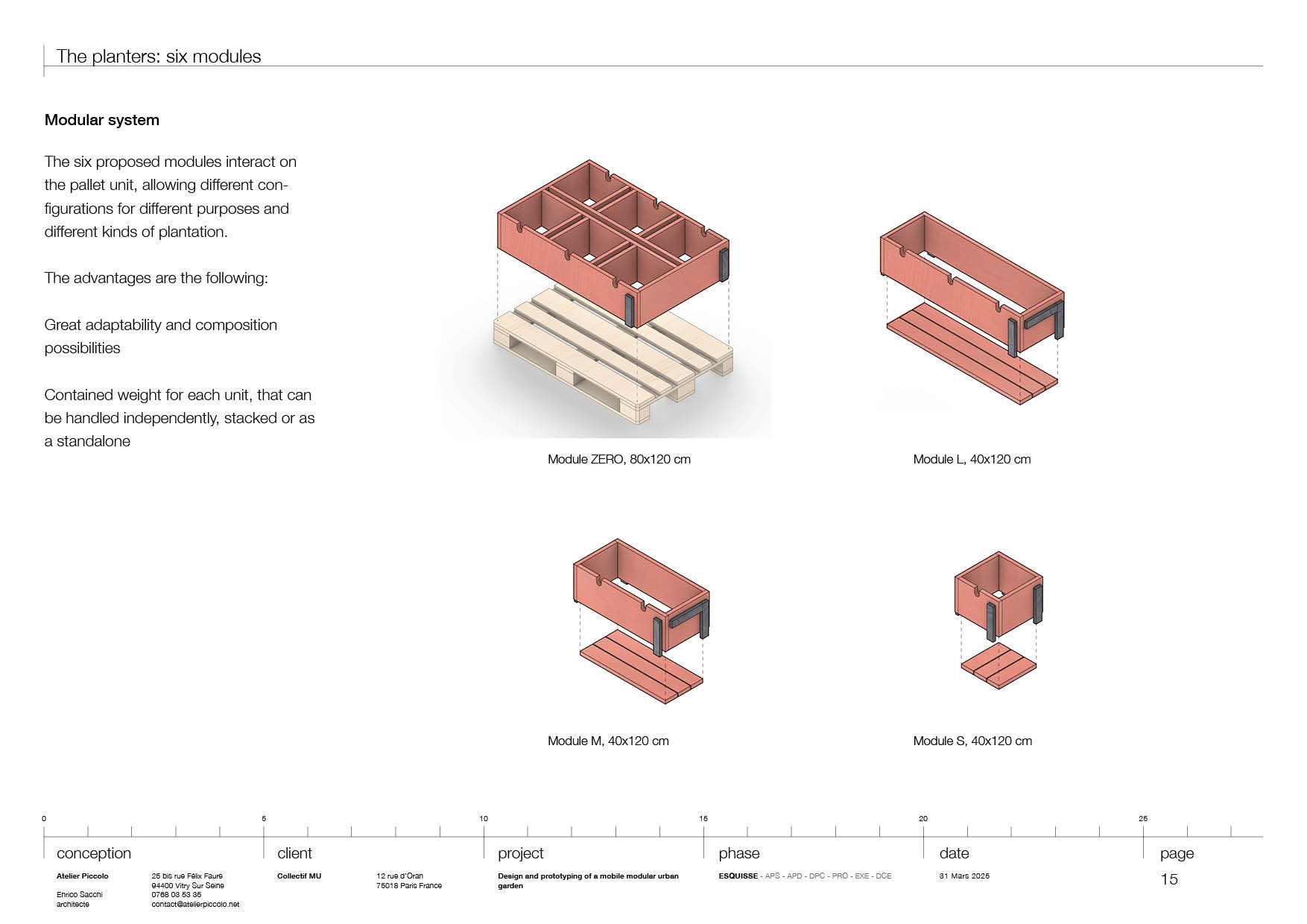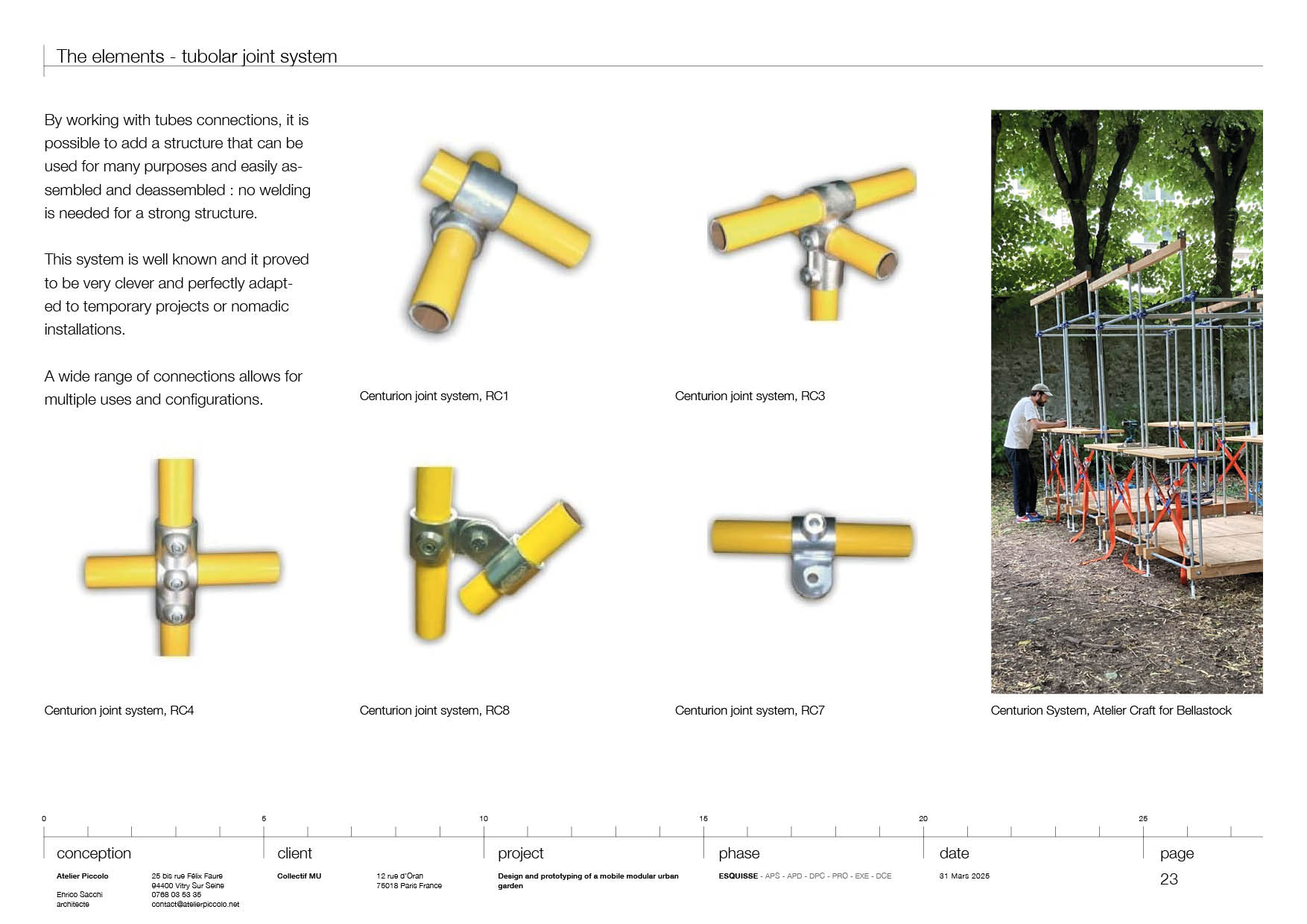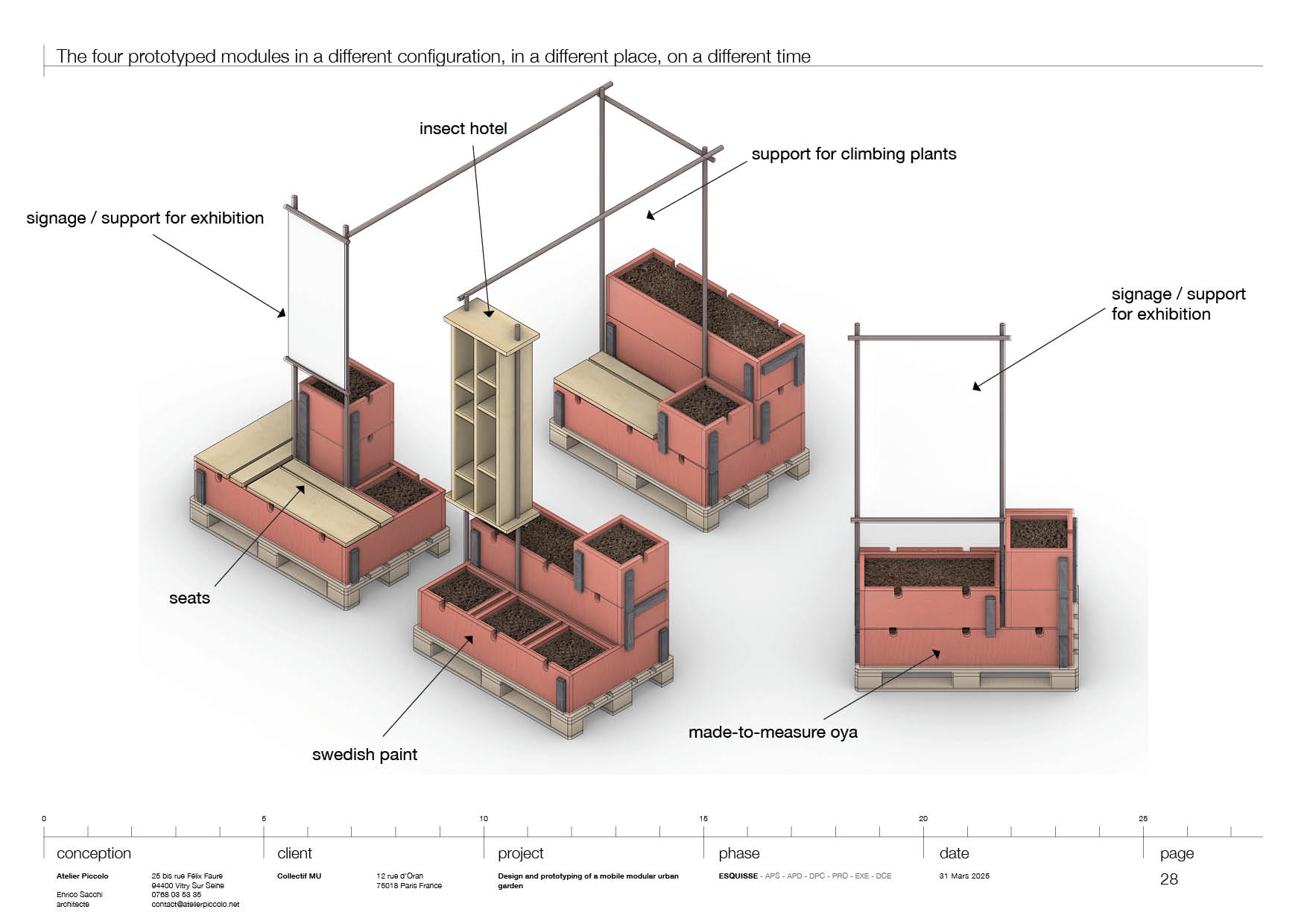Modular & Mobile garden, associated with a Resource & Challenge Map for ACPs
- 30.06.25
- Prototype #3
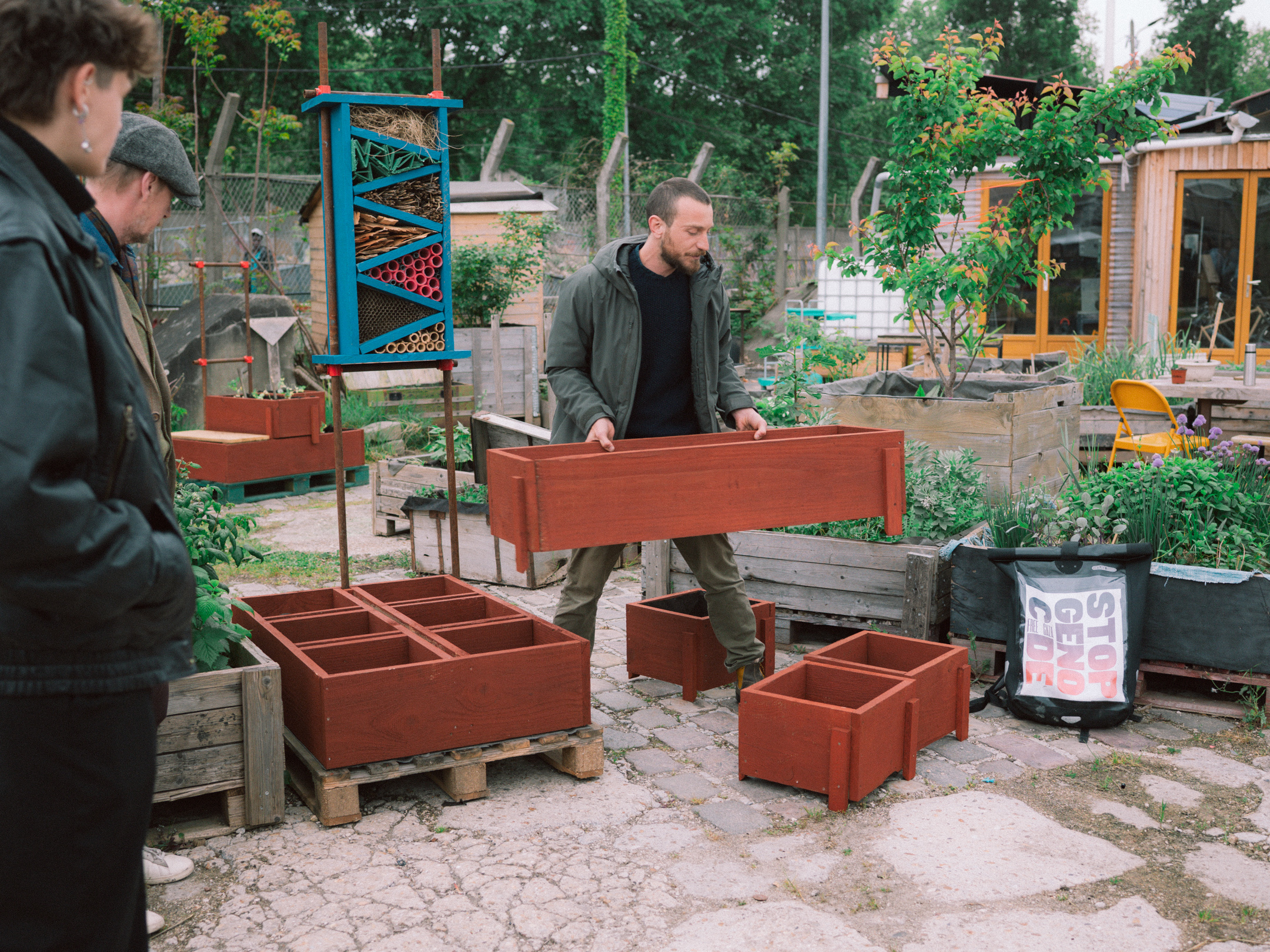
ACPs are not just enclosed spaces. Many have outdoor areas, often underutilized, degraded, or uninhabitable, especially in summer. In response to climate change and the need for welcoming, livable environments, ACPs are experimenting with innovative gardening practices.
These DIY-inspired gardens are more than green spaces; they are living laboratories where new ecological models emerge and collaborations with artists and local communities thrive. However, challenges such as temporary land access, community engagement, and integration into artistic programs remain.
To address these issues, Alter-Places explores two key and complementary approaches: a mobile, modular, adaptable garden, designed by Atelier Piccolo and crafted by La Bricole, ensuring flexibility and integration with cultural activities ; and a mind map of the hidden challenges—management, partnerships, maintenance—illustrated by Hannah Lu Verse.
This prototype embodies a key idea: the true strength of these gardens lies not only in their physical form but in the shared practices they cultivate. Gardens are envisioned as dynamic hubs that contribute to foster lasting relationships within the communities where they are based.
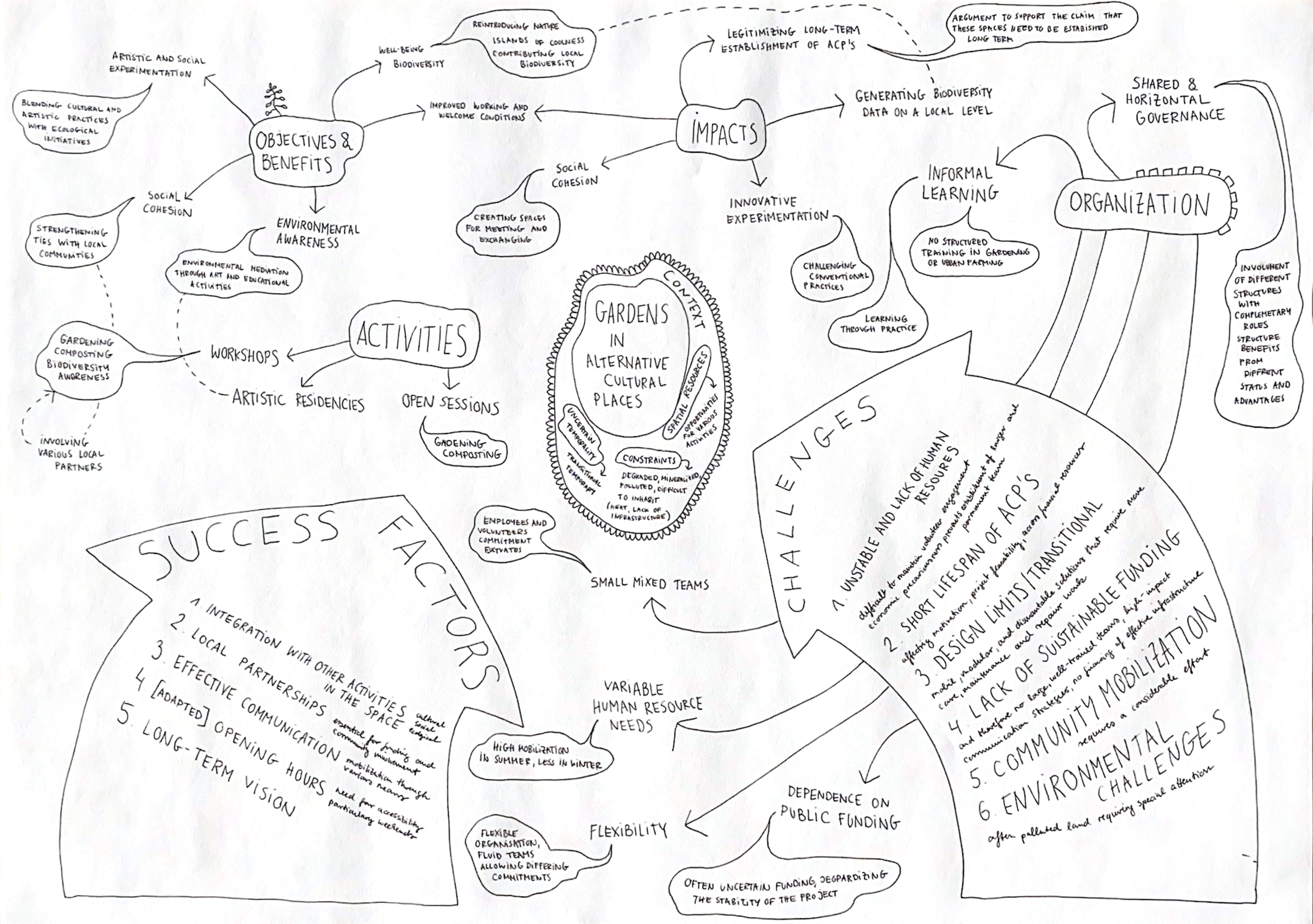
Elements included in the prototype: modular and mobile garden system ready to be used, mind map of hidden resources and challenges of garden practices
Number of people involved: 9
Competencies required: architecture and design, construction, creative skills, qualitative research skills
Partners: Atelier Piccolo - design and construction of the modular garden system, La Bricole - construction, Hannah Lu Verse - design of the mind map
Development time: 7 months
Estimated budget: 5500€
Materials: pallets, formwork panels, cleats, swedish paint, hardware, tubular structure
Methodology & Templates
1.Drawing up specifications and look for appropriate skills
The first step was to write a specification document for the prototype's creation. This document, developed collaboratively with project members and the managers of La Station's garden, highlighted two significant challenges: mobility and modularity. Mobility is crucial for ACPs in order to adapt to potential constraints like construction work or relocation. Modularity, on the other hand, allows the garden to expand or shrink based on needs and available space. It also enables a multitude of uses, such as planting, maintaining, working, resting, sheltering animals, exhibiting, creating, and raising awareness.
This specification document was then given to Atelier Piccolo, an architecture studio, which has frequently collaborated with La Station - Gare des Mines. His expertise was primarily in translating ideas into reality, identifying systems for mobility and modularity, and working with a strong ecological awareness, emphasizing the reuse of resources. His work on this project resulted in a realization document, which was collectively reviewed twice with the project team. This iterative process allowed for refining the prototype's needs and structure.
2.Sourcing and buying materials for construction
Once the realization document finalized, it served as the basis for sourcing (for pallets, wood and tubular structures) and purchasing materials (paints, hardware).
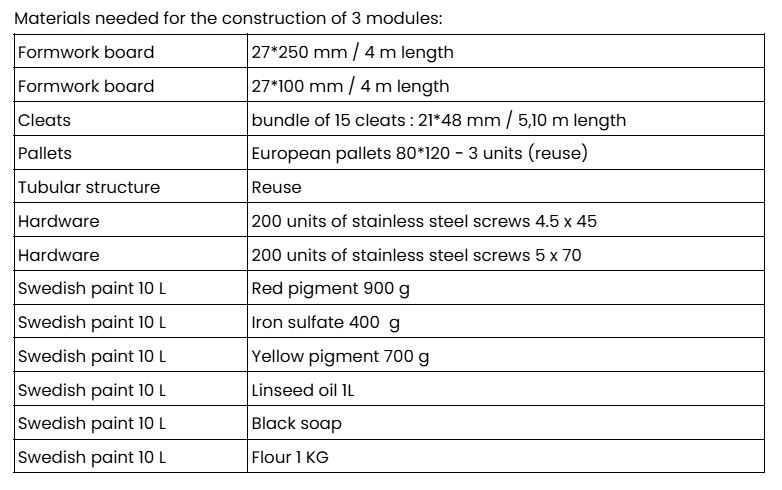
3.Conducting interviews with people involved in gardening practices in ACPs
As our discussions progressed, it became clear that a garden is not just a physical object; it is also, and more importantly, an intangible, invisible process that enables its creation and long-term maintenance within ACPs. It then seemed essential to us to link this physical, constructed prototype with a guide that would document the resources needed for this type of practice, as well as the associated challenges.
To achieve this, we interviewed several individuals involved in gardening practices within ACPs. Through interviews, each lasting about an hour and followed by a site visit, we learned about the role of these practices within ACPs, their creation and maintenance processes, the challenges they face, the resources they implement, and their key success factors.
4.Analysing the interviews and drawing the mind map
The analysis of the interviews brought forth several key themes that we felt were essential to convey. These included:
Envisioned activities: What kinds of activities could these garden spaces host?
Objectives and benefits of garden practices: What are the core goals and advantages of engaging in gardening within these cultural contexts?
Organizational structure for sustainability: What kind of organizational models are needed to ensure these practices endure over time?
Impacts: What are the broader effects, both tangible and intangible, of these garden initiatives?
Key success factors: What elements consistently lead to positive outcomes for these types of practices?
Main challenges encountered and potential solutions: What obstacles do these projects face, and what strategies can address them?
Instead of creating a traditional guide, we opted for a mind map. This visual format allowed us to effectively articulate the various essential elements that emerged from our analysis, making complex information more accessible. To achieve this, we collaborated with Hannah Lu Verse, a stakeholder from Floating University, an organization that includes a vast garden space. Her unique skill in visually representing complex information in a quick and engaging way helped us effectively highlight the often "hidden" dynamics and challenges of gardens within ACPs.
5.Building the garden system
Planning and building the modular and mobile garden system came next. In partnership with La Bricole workshop, architecture studio Atelier Piccolo designed three prototype modules for the system over the course of a week. The fabrication process followed several steps:
- Refurbishing and repairing the pallets
- Cutting and assembling the wooden planks based on their intended use
- Assembling the wooden modules on the pallet
- Creating the tubular display structure and attaching it to the module
- Conducting a Swedish paint workshop with the public during the project's final event
Following this productive week of construction, La Station garden team, in collaboration with members of Alter-Places, filled and planted the containers, allowing the project to be presented at the final project conference.
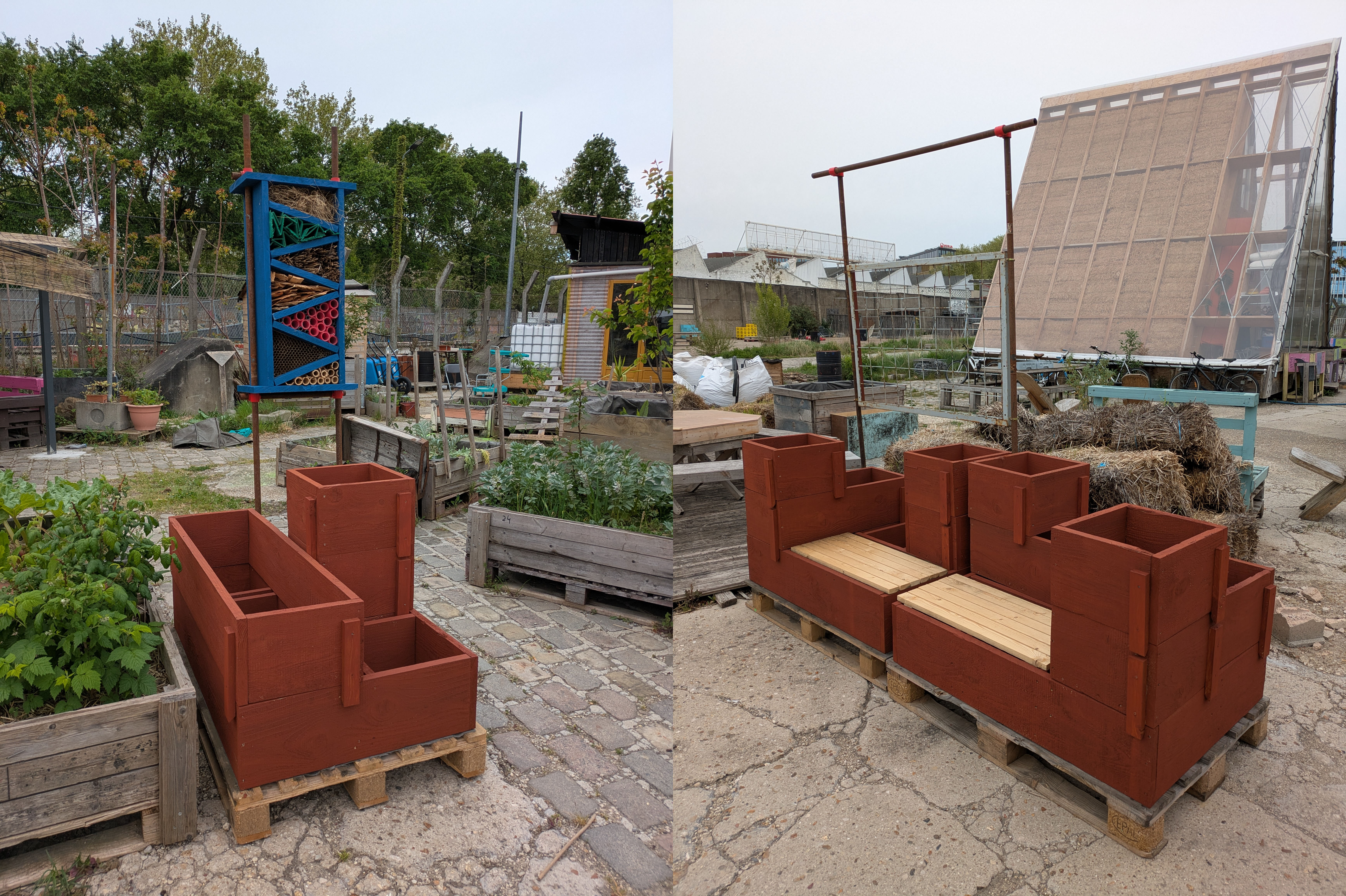
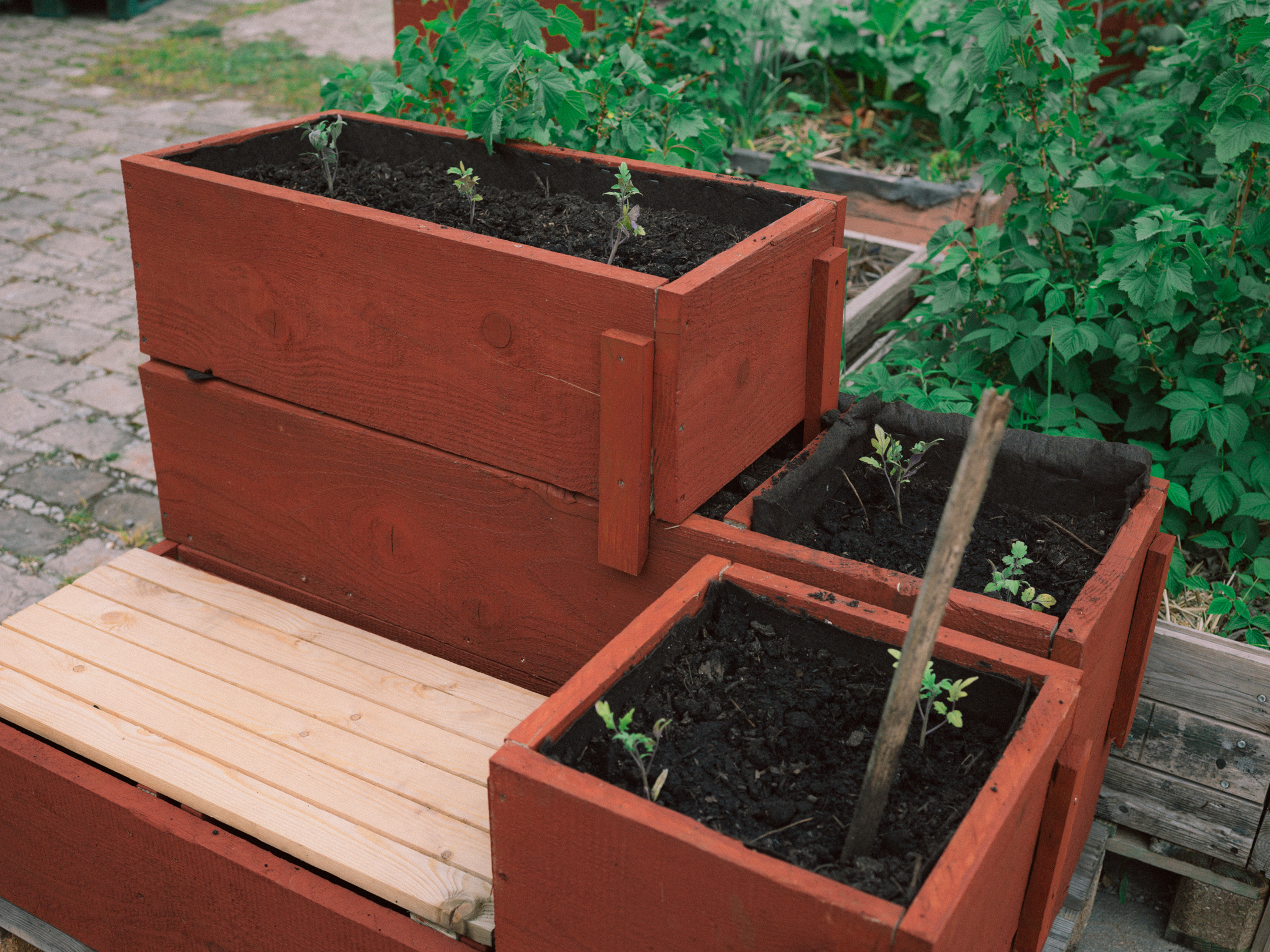
6.Use scenarios
This mobile and modular garden system, paired with a mind map illustrating invisible dynamics, offers dynamic solutions for ACPs. Both components work together to provide comprehensive support across various contexts:
For ACPs with existing gardens that face operational or spatial challenges:
- Mind map for problem solving: the mind map can become a guide for diagnosing and resolving functional issues. It clarifies complex aspects like efficient organization, volunteer engagement, and anticipating common challenges.
- Modular system for spatial solutions: if the difficulties are spatial (lack of accessibility, non access to permanent physical space) or related to how the garden is used, the modular garden system offers concrete solutions. Its flexibility allows you to easily add seating, optimizing the space for activities and making it more user-friendly.
For ACPs planning a new garden initiative: if your ACP does not yet have a garden but is keen to develop one, this integrated approach helps you start smart:
- Mind map for strategic planning: the mind map provides a crucial overview of all the resources needed (from tools to volunteers) and the challenges to anticipate (like funding or long-term commitment) before you even break ground. It helps you understand the factors for success and plan a realistic approach. It also explains the various advantages for a ACP in implementing this type of practice.
- Modular system for phased development: the mobile and modular garden system offers a tangible starting point. You can begin with a few modules, experimenting on a smaller scale to learn and adapt without a large initial investment. This low-risk approach allows for practical experience before committing to more ambitious projects.
For ACPs facing temporary or changing spatial constraints: ACPs often operate in flexible or uncertain spaces. This garden system is designed for precisely that:
- Adaptability: the mobile and modular garden system ensures continuity. Its portability means your gardening activities can continue even if your ACP needs to relocate, to be renovated, or to adapt to new layouts. Modules can be easily moved, reassembled, and reconfigured to fit different spatial setups, maintaining your green space and associated programs.
- Think collectively about mobility: this prototype offers a unified solution for making traditionally heavy infrastructure like gardens mobile by leveraging standardized supports (pallets) that use existing moving tools, and by encouraging collective, local investment in shared mobility equipment (like pallet jacks or cargo bikes) to reduce individual costs and enable flexible, regular adaptation of cultural spaces.
For fostering community engagement and collaboration:
- Garden as a new meeting and activity centre: the physical garden itself becomes a vibrant meeting point for workshops, participatory gardening events, or even artistic activities. Its presence and tubular structure naturally invites interaction and exhibition.
- Mind map for shared understanding: the mind map can be used as a discussion tool during community gatherings. It helps clarify roles, share responsibilities, and collectively identify potential partners or specific skills within the community that can contribute to the garden's success and broader impact.
For environmental awareness projects:
- The garden as a residency space for awareness: the garden comprises an exhibit module allowing display. It can become a vibrant and evolving space for artistic residencies. Artists (sculptors, performers, musicians, visual artists, etc.) can use the garden as their medium and inspiration to create projects where environmental awareness is central.
- Mind map for deeper learning: the mind map highlights the ecological and social benefits of gardening practices. It helps explain the "invisible dynamics" of nature and community building, making complex environmental and social concepts more accessible and engaging for participants.
By integrating these two components, ACPs gain a comprehensive, adaptable, and insightful solution for bringing nature, culture, and community together, regardless of their permanent space limitations.
